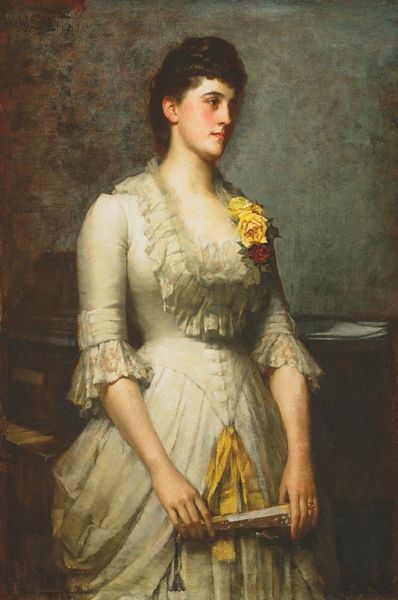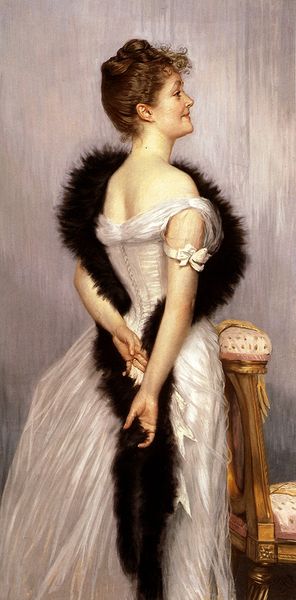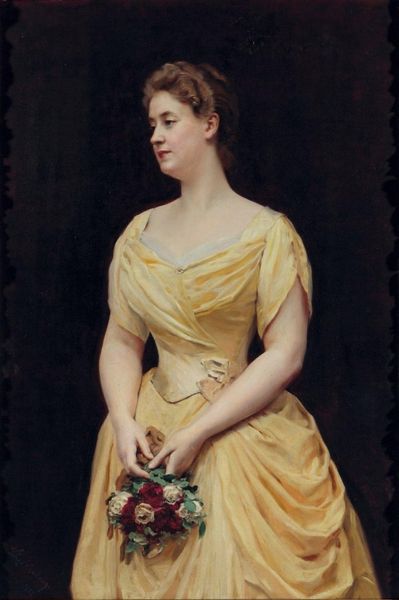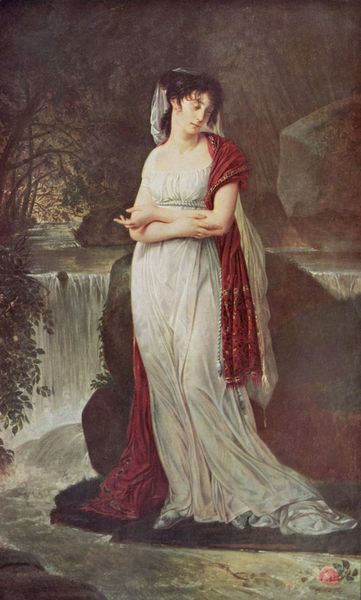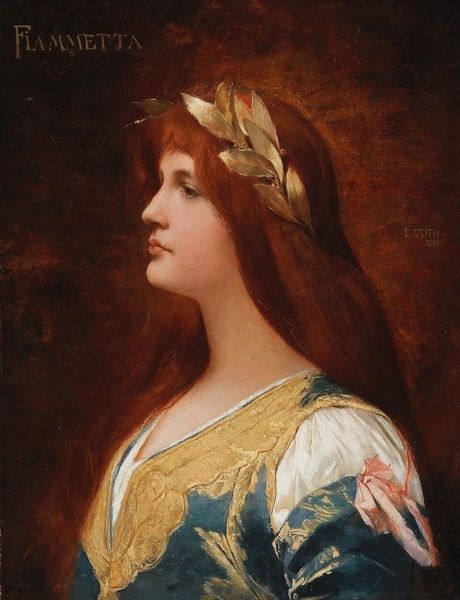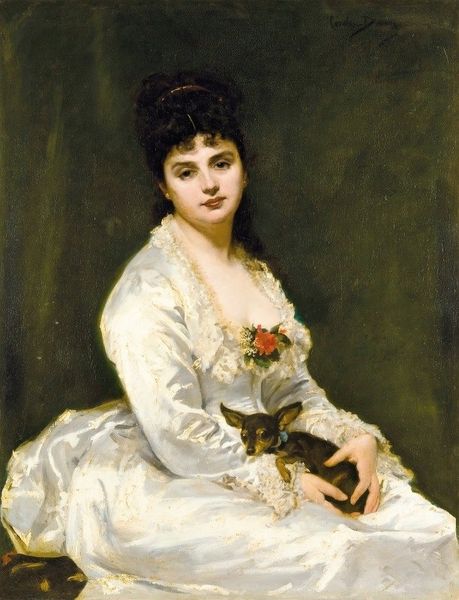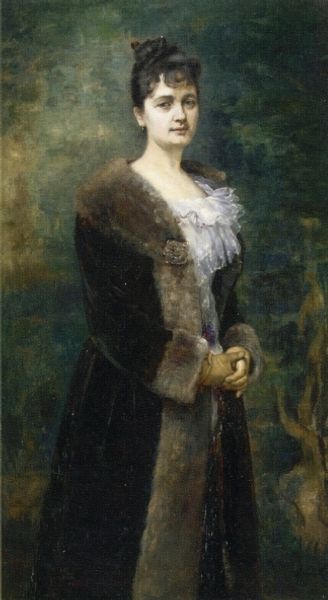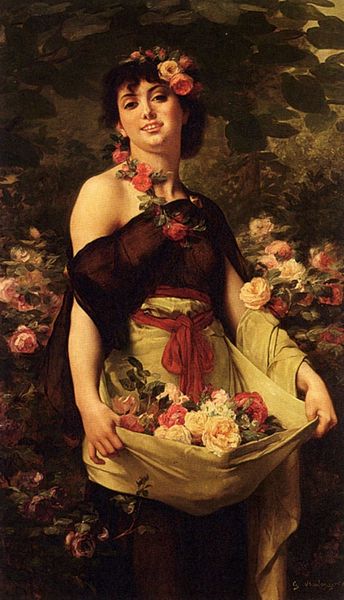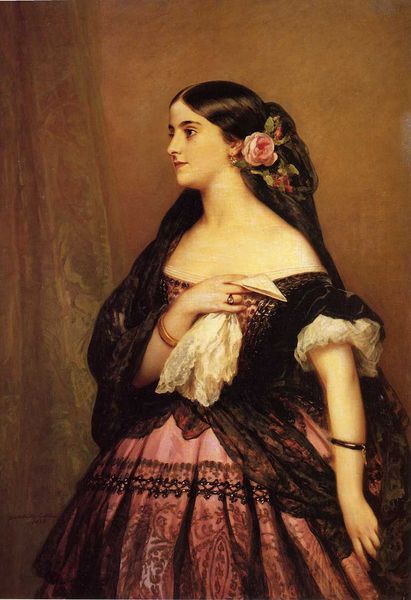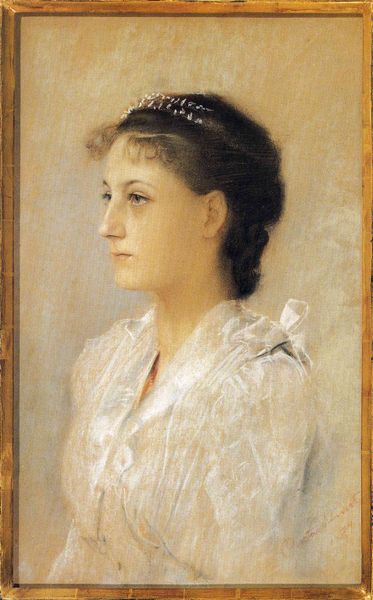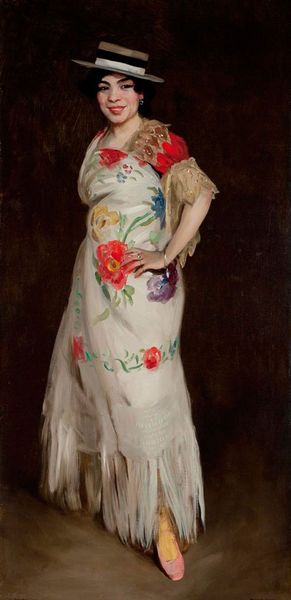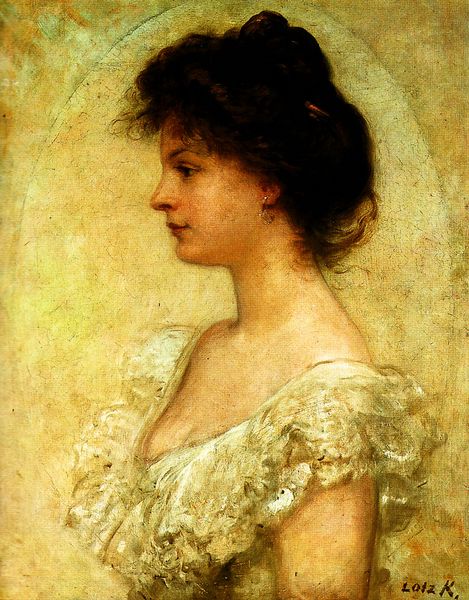
Copyright: Public domain
Jules Joseph Lefebvre painted this portrait of Julia Foster Ward in France, likely during the latter half of the 19th century. It captures a young woman adorned with flowers, evoking a sense of idyllic beauty and innocence. This image participates in a long tradition of idealizing women within art, often associating them with nature and purity. During the 19th century, the French Academy played a pivotal role in shaping artistic tastes. Artists like Lefebvre often found success by adhering to academic standards, which emphasized technical skill, classical themes, and the representation of beauty. This portrait reflects those values, presenting its subject in a way that is both aesthetically pleasing and morally virtuous. But who was Julia Foster Ward? And why did Lefebvre choose to paint her? To fully understand this work, we need to research the social and cultural context in which it was produced, delving into the lives of both the artist and the sitter. By examining letters, exhibition catalogues, and other historical documents, we can uncover the complex web of relationships, institutions, and ideas that gave rise to this captivating image.
Comments
No comments
Be the first to comment and join the conversation on the ultimate creative platform.
